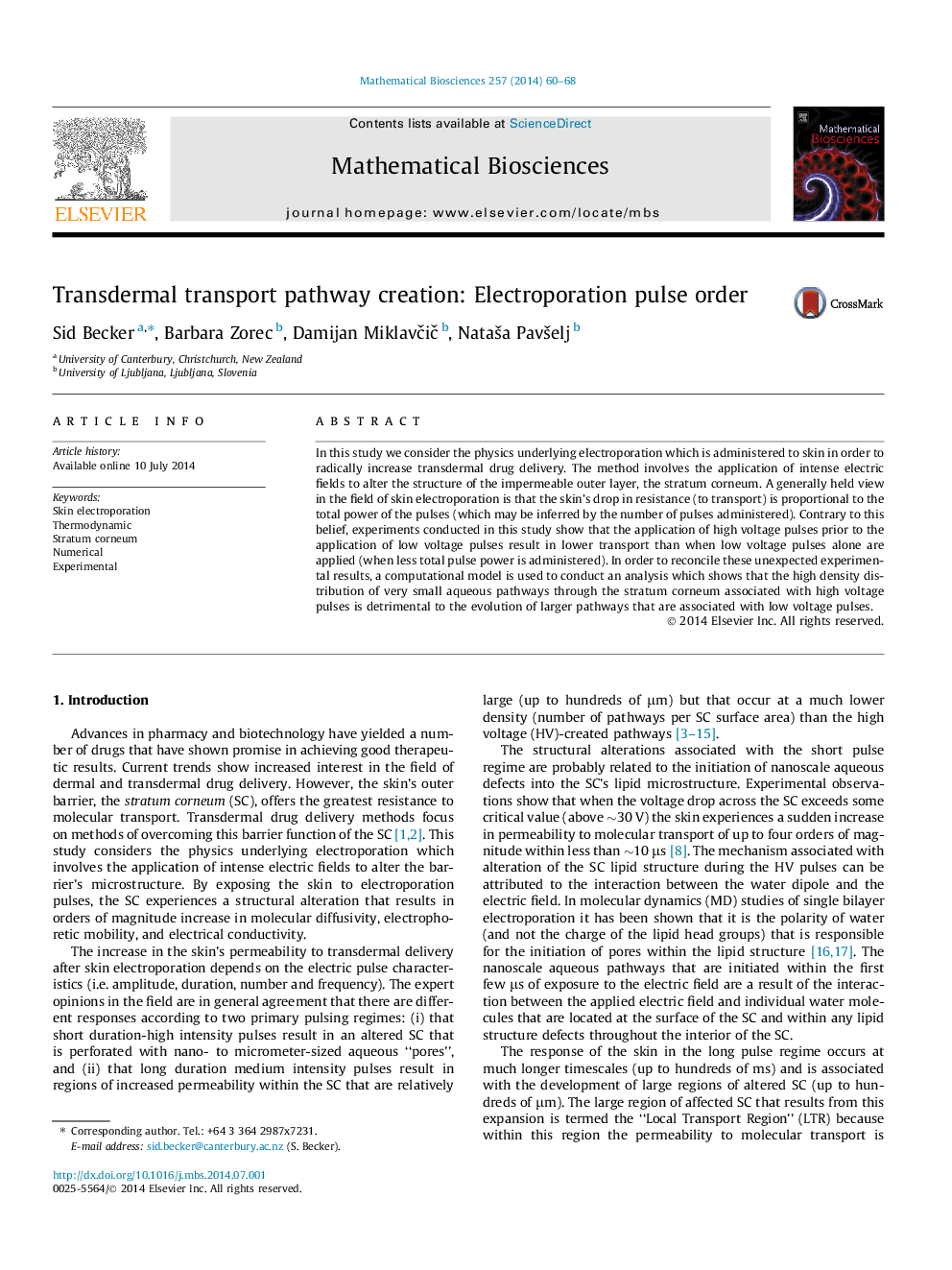| Article ID | Journal | Published Year | Pages | File Type |
|---|---|---|---|---|
| 6372001 | Mathematical Biosciences | 2014 | 9 Pages |
Abstract
In this study we consider the physics underlying electroporation which is administered to skin in order to radically increase transdermal drug delivery. The method involves the application of intense electric fields to alter the structure of the impermeable outer layer, the stratum corneum. A generally held view in the field of skin electroporation is that the skin's drop in resistance (to transport) is proportional to the total power of the pulses (which may be inferred by the number of pulses administered). Contrary to this belief, experiments conducted in this study show that the application of high voltage pulses prior to the application of low voltage pulses result in lower transport than when low voltage pulses alone are applied (when less total pulse power is administered). In order to reconcile these unexpected experimental results, a computational model is used to conduct an analysis which shows that the high density distribution of very small aqueous pathways through the stratum corneum associated with high voltage pulses is detrimental to the evolution of larger pathways that are associated with low voltage pulses.
Related Topics
Life Sciences
Agricultural and Biological Sciences
Agricultural and Biological Sciences (General)
Authors
Sid Becker, Barbara Zorec, Damijan MiklavÄiÄ, NataÅ¡a PavÅ¡elj,
